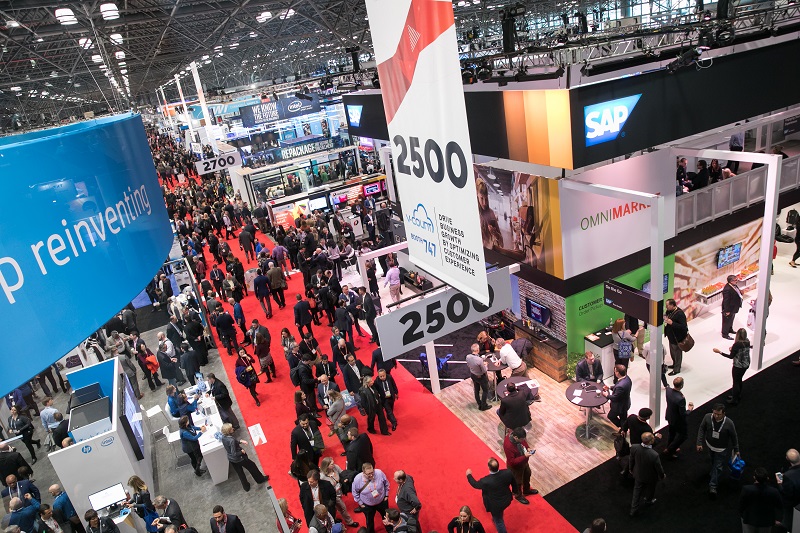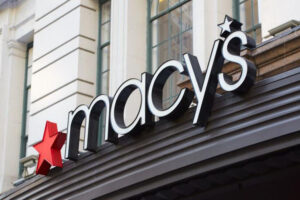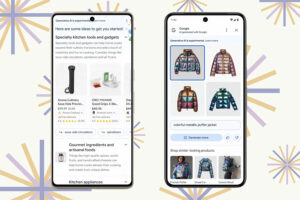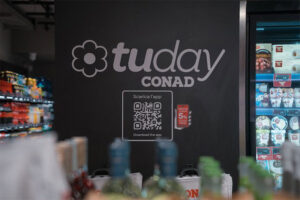Game-changing retail technology from NRF 2019
Every retail tech company worth its salt descended on NRF in New York, each showcasing the latest innovations. Here is Retail Week’s round-up of the technology that might make an impact.
Alibaba Freshippo
The Chinese etail giant showcased new technology from its Freshippo (Hema) food business, which exemplifies what the Chinese giant refers to as “new retail”.
A mocked-up restaurant in which waiters had been replaced by dome-like robots carrying dishes to diners was a Jetsons-style take on the classic silver cloche and drew the biggest crowd.
However, it was perhaps another Freshippo innovation that retailers should take most notice of – a 30-minute food delivery service.
Customers order using an app. The order is then split into various categories and each is simultaneously picked by a store assistant and packed into a bag. The bags are then dispatched into a conveyor system, which whisks them over the heads of the customers in the aisles below to a packing area.
Once an order has been compiled, it is delivered by bike to the customer.
Americhip
The most famous uses of holograms so far have been in the entertainment industry as everyone from Tupac to Peter Cushing has been revived for the benefit of their fans and studios.
But retailers such as Bloomingdale’s have begun to use Americhip holograms in-store as hi-tech retail theatre. The US department store recently used them in its windows during an event, while eatery Subway has tested the technology to guide customers through its self-ordering system.
As in-store screens perhaps begin to blur into the background for many people, holograms offer a new way for retailers to catch a jaded consumer’s attention.
Americhip usually works with retailers to convert existing imagery such as products or user guides into holograms, which can then be updated wirelessly for different events and purposes.
Bossa Nova
The robotics company is already working with Walmart in the US and has just set up an office in Sheffield to service UK grocers, three of which are understood to be testing the robots in stores.
The robot functions by gliding along aisles, scanning shelves and then reporting its findings back to staff, who then take action to remedy any issues presented.
“We can solve lots of problems,” says Bossa Nova UK boss Red McKay. “Because we use data gathered by the robot to see the best use cases for a retailer. Do they restock by profitability or velocity of sale? Do they have a big problem with phantom inventory?”
He says installing a robot can save multiple hundreds of thousands of pounds per year at a large supermarket. “There is a reduction in inventory and an increase in revenue because they address inefficiencies,” he maintains.
Smart Shelf
Digital signage product Smart Shelf allows retailers and FMCG brands to track products and user behaviour as well as offering a checkout-free proposition.
Created by AWM, automated inventory intelligence enables real-time tracking of a product once it is on the shelf and so helps reduce waste, boost staff productivity and cut down on operational inefficiencies.
It also catches consumer demographic and behavioural data visually and presents it to retailers and FMCG brands through a content management system. The technology can gauge how far away a customer is and will show pricing if they are close, and promotional materials if they are further away.
Walmart and Shop Rite have both partnered with Smart Shelf, as have Diageo and Hershey’s
Iam Robotics
Another take on in-store robots, this time from Iam Robotics. Unlike Bossa Nova, which works within the current primary retail model, restocking shelves so that shoppers can select products themselves, Iam Robotics envisions a future where in-store customers picking goods off the shelf will be rare.
The rationale is that the consumer picking up products off the shelf or hanger in-store, then queuing to pay, is an increasingly anachronistic part of a changing retail supply chain and, as store footfall dwindles and online shopping continues to grow, the demand for click and collect will rise – and robots will select goods on shoppers’ behalf.
Iam bills its technology as the “world’s first mobile picking robot”, which uses vision technology to view shelves before selecting items. The video shows it in action in a stockroom but the same task can be performed on the shopfloor.
Source: Retail Week




